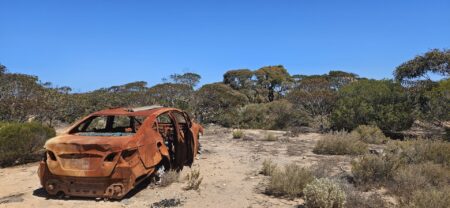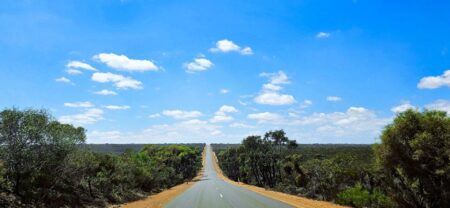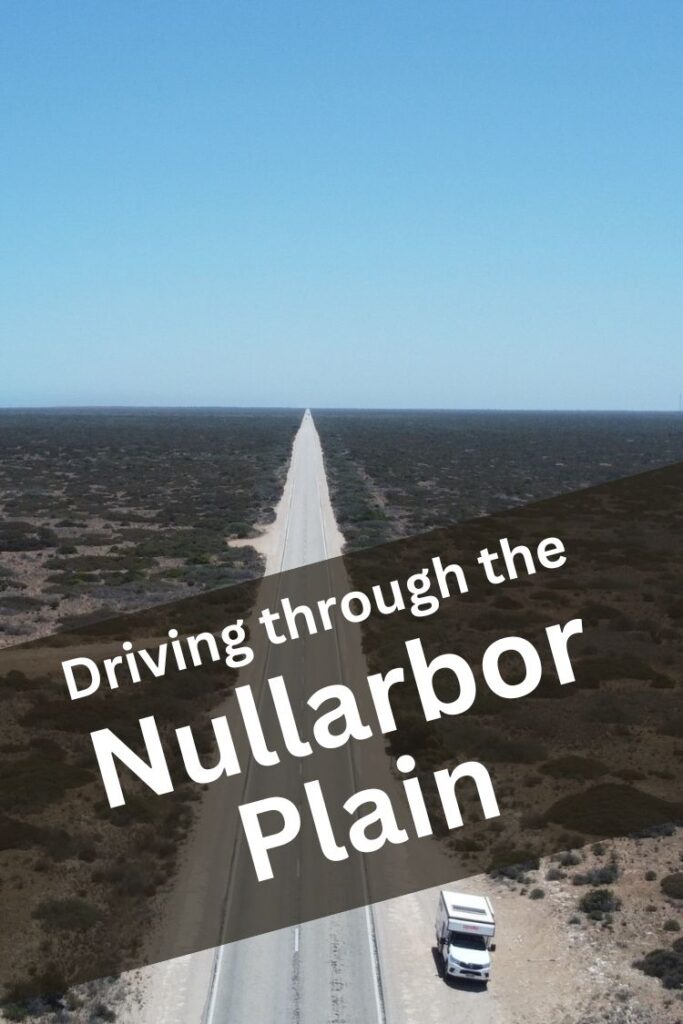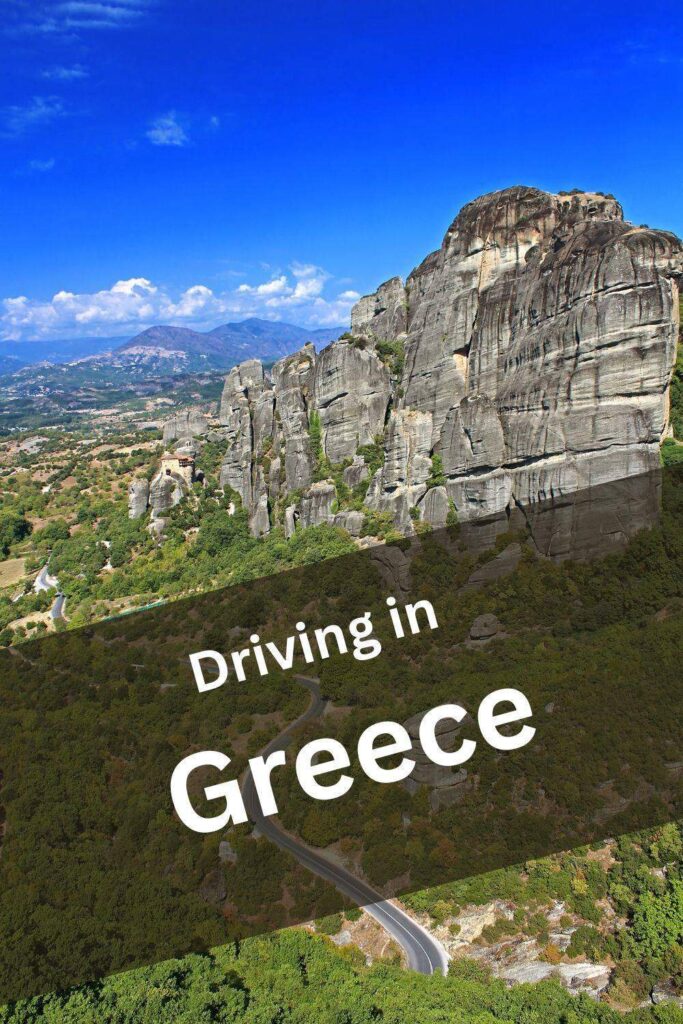The following are some of my tips and personal impressions on driving through the Land Down Under. My experience comes from driving from Sydney along the east coast up to Cairns in a campervan, as well as from Perth to Sydney on an epic 7000km drive.
For more information, be sure to check out these articles on my Australian East Coast Road Trip and Australia West Coast to East Coast Road Trip
Traffic rules basics
First and foremost, the basics: driving is on the left side. All common driving requirements are followed (i.e., mandatory seatbelts, it is illegal to drive under the influence, and the driving legal age is 18). Australia uses the metric system so when driving, it’s kilometers (or, being an ex-British colony, kilometres) and litres.
Roundabouts are clockwise, with way given to those already in the roundabout (so to the right). Otherwise way is given to cars coming from the left.
Speed limits are often not indicated and the default limits are 50 km/h in urban areas, 100 km/h in rural areas, and an abysmal 110 km/h on highways.
Campervan Basics

My suggestion is to avoid large motorhomes with bathrooms and showers due to the many camping grounds you will come across (also, that perk brings with it the need for cleaning and disposing of the water).
Also, if traveling mainly on highways, a 4WD or highly resistant vehicle is not necessary. This clearly changes if traveling in the Outback, where the road conditions are harsher. It is recommended to rent a vehicle with a bull bar because of the relatively high risk of road kill (more on this below)
For a road stretch like I did on mostly paved roads, the 4th generation Toyota Hiace from the 90s does its job perfectly and since they are so successful and common because of the competition, they are easy to find in good shape and at good prices.

Camping grounds are spread all over the place. Their rates are, on average, around 50 AUD per night. Major alterations to prices come from having a concrete slab as opposed to a grass lot and from whether the slot is powered or not.
Freedom camping is permitted only to self-contained vehicles, meaning with its own toilet and water storage. Always check if the area where you intend to park for the night permits freedom parking. In places where it is not allowed, people do check and will issue fines and even force you to move.
Make sure to download all the relative apps and check websites related to camping, such as camping spots, and places where fires are allowed or not (as well as wildfire alerts). Google maps can already give an indication but specialized apps will give more information on the amenities and can also allow you to pre-book a site.
Be sure also to prepare adequately for the road trip. Camping and ultimately sleeping in a car is clearly not the same as doing a road trip and stopping in a motel. As such, be sure to stock up on groceries, plenty of water (both drinking and to be used for cooking/shower etc), a charged fridge, or regularly buy ice for a cooler. Also, sun screen lotion and insect repellent are life savers.
Also be sure to plan your daily drive, meaning knowing beforehand the petrol stations where you will stop and having at least a rough idea where you will camp for the night.
Road Conditions

Road conditions are quite good on paved roads. In some cities, there is less quality but nothing major.
It is easy to find offroad or dirt roads as soon as one ventures into the hinterland. Depending on the region these can be nothing major requiring 4WD for example but there is a risk of flash floods. Other regions are more difficult, with heavy presence of dirt roads, suspensions-destroying corrugated roads. Also, the beaches and coasts in Australia are magnificent and you can drive on some, but that brings its own complications for driving on wet sand.
When doing the East Coast road stretch, there are two main highways: the Pacific Motorway from Sydney and the Bruce Motorway from Brisbane to Cairns.
Driving
Australians will not appreciate this comment, but they are not very good drivers. That being said, they are respectful of limits and have good driving manners, so there are no dangers when it comes to reckless drivers, but rather a higher chance of finding clueless, slow drivers.

Road signs are all over the place, in the sense that they range from hilarious entertainment signs on long stretches of road, to unintelligible parking regulations, to the iconic animal crossing signs.
Speed limits are strictly followed, even when common sense would suggest to do otherwise. Even on long stretches where the roads are in good shape and you can see any danger much ahead of time given that there is nothing else to look at, drivers will follow the 110km/h limit. The (often exaggerated as in many other countries) reduced speed limits in parts where there are road works, is also precisely obeyed.
That being said, the speed limits may sometimes seem too high, such as rural roads passing near farms. In any case limits are followed so you will encounter the terrifying “road trains” that are just unstoppable mountains steaming ahead at 110km/h.
Road tolls

Australian toll roads are all electronic and are mostly located around Melbourne, Sydney and Brisbane. The easiest way to pay for them is to register accounts beforehand and there are several providers depending on the region, such as LINKT in Queensland or eMU in New South Wales.
In some cities, certain streets may also be toll roads (such as Sydney tunnel)
Fuel
Refueling is done the “non-American” way, for lack of a better word for it. This means payment is not done upfront to unlock the pump. Be aware that fuel amounts are measured in cents so the dials will turn pretty quickly.

Depending on the region, fuel might be your primary concern or no issue at all. On the East Coast on highways fuel stations there are many small and larger towns, so you will not experience those infinitely straight and never-ending roads without any petrol station for hundreds of kilometers.
On the other hand if driving in the Red Center, or on the southern coast, you will find yourself surrounded by hundreds of miles of sparse (or sometimes non-existent) population and the only gas station is like an oasis in the desert where you must stop to fill up even if you still have fuel in the tank.
Petrol stations are both serviced and self-serviced.
Driving Etiquette

Nothing in particular. It is customary to be polite and make thankful hand gestures when someone lets you pass. For Americans, right turns at a stop sign are not permitted by default. Parking signs are quite unintelligible.
On long stretches of road, such as in southern Australia, it is the norm to make a hand gestures of salute when crossing a car in the opposite direction. It is much like at sea, where encountering another traveler within the vast ocean is a rare and welcome sight.
Driving Quirks

I did not have a problem with this, being used to it, but for some, it may be a problem: the traffic is heavily based on roundabouts. Also, road signs are hilarious. In some places, simple signs that should indicate simply giving way are replaced with long, extremely polite indications of how giving way should be done: slowly, to the left, and with care. Also, you will for sure encounter iconic animal crossing signs such as koalas and kangaroos, but also some more entertaining signs indicating high fatigue areas with trivia questions, jokes about kids asking their parents ‘Are we there yet?’ and the like.
Wildlife

Regarding the last point on animal crossings, you will see a lot of carcasses of run-over wildlife. The long stretches of roads crossing open fields inevitably cause this. Also, Australians are known for not being the best drivers, and kangaroos are known for having no sense of traffic or direction whatsoever. I did not experience any crashes but many websites recommend renting a vehicle with a bull bar just in case, and I can see why.
In general keep a close eye on the sides of the roads for wildlife, and for signs indicating potential wildlife. Also get familiar with the fauna of the region and the natural habitat (e.g. passing through a forest with eucalyptus trees brings a chance to encounter koalas, passing through grassy areas and shrubbery makes kangaroos more frequent).
In case of an accident with local fauna, you can call 1300 ANIMAL for animal rescue.
In general it is best to avoid dusk and dawn, when animals are more active, there are less cars meaning they are more likely to be near or on the roads, and visibility is low. Driving at night should be avoided in most cases.





